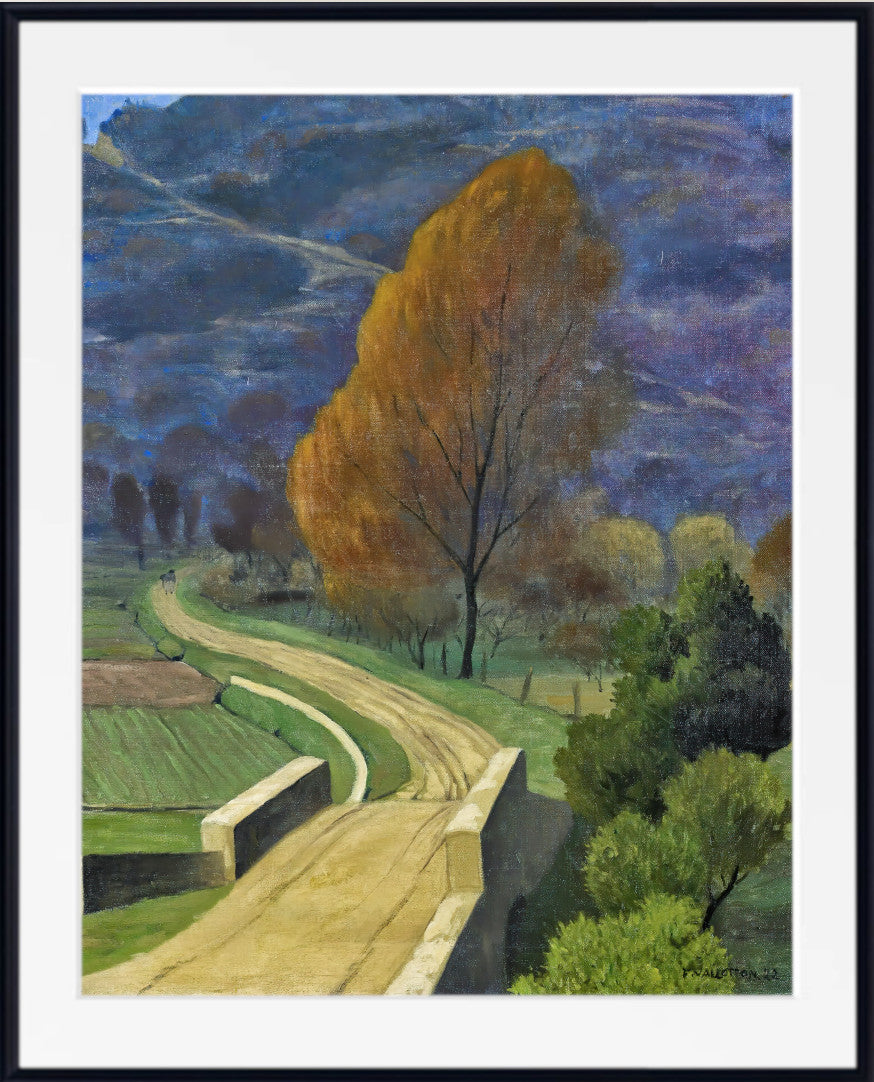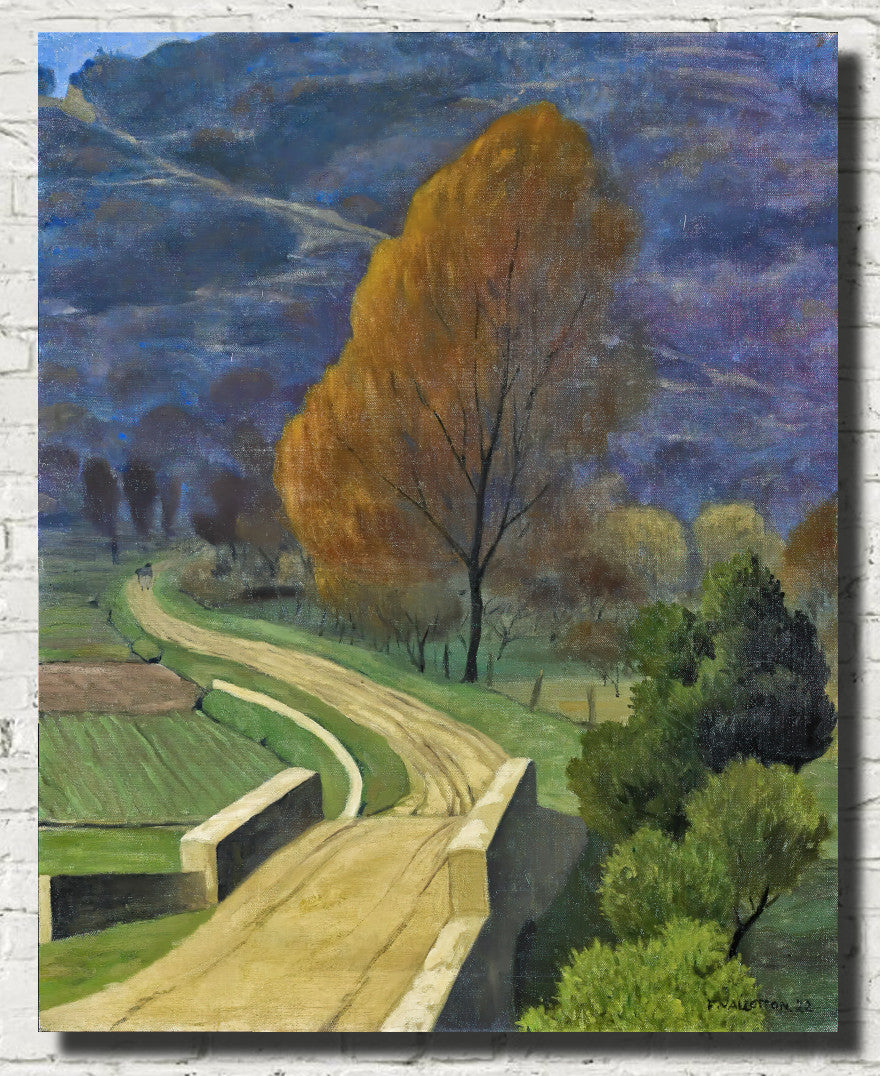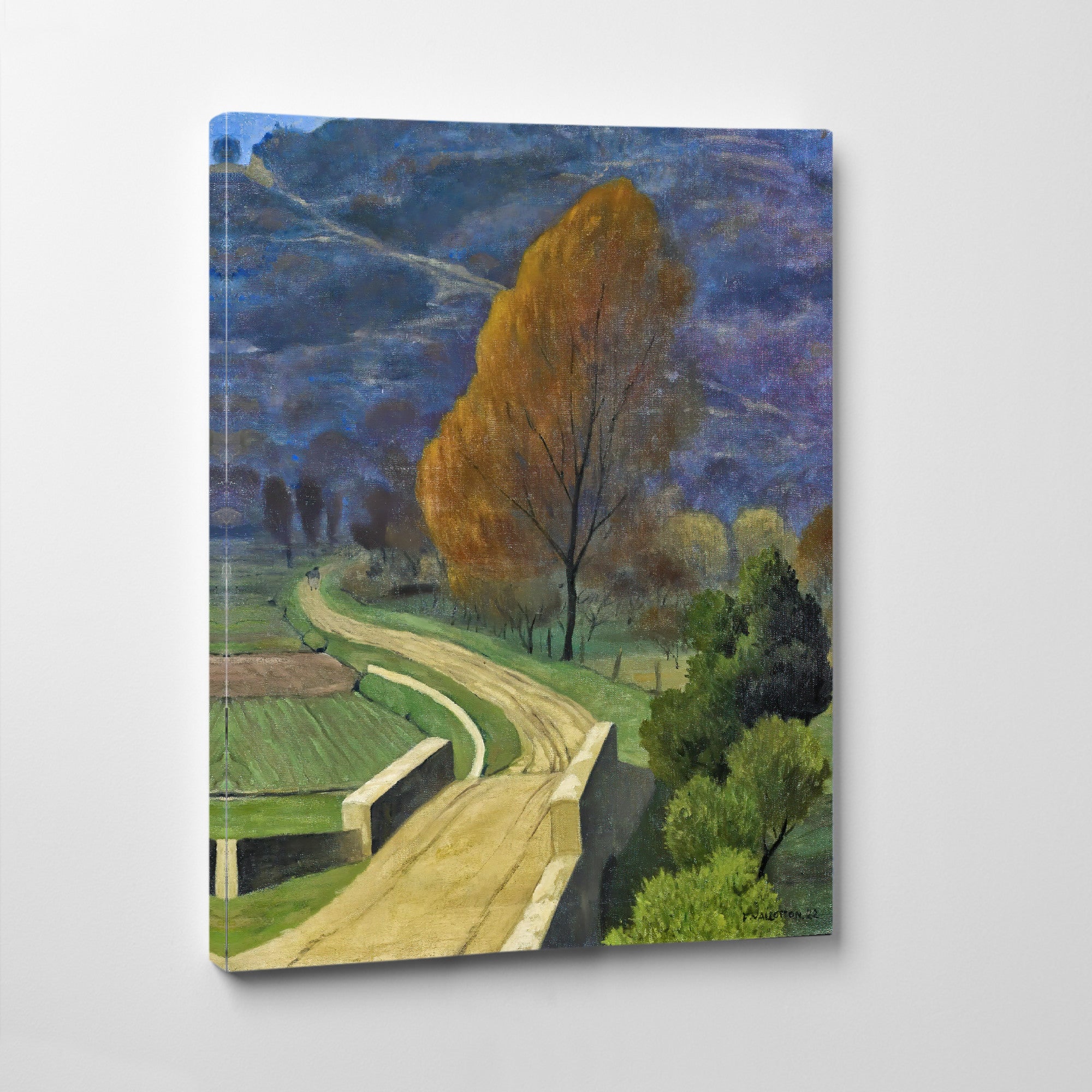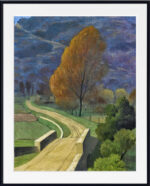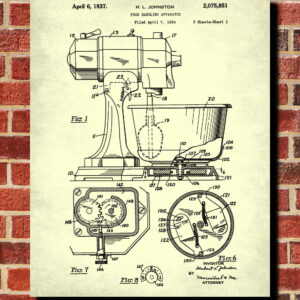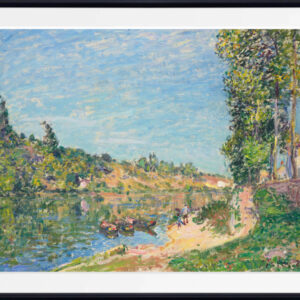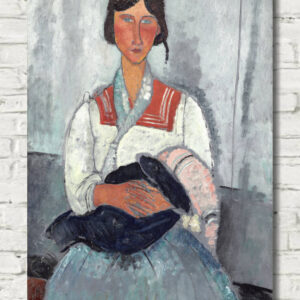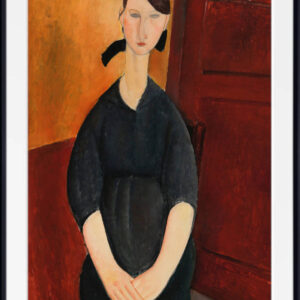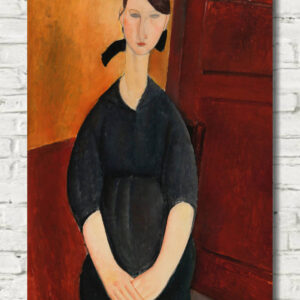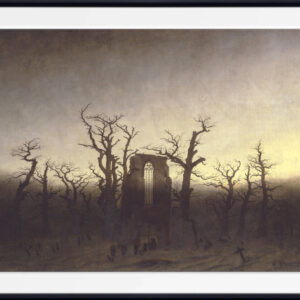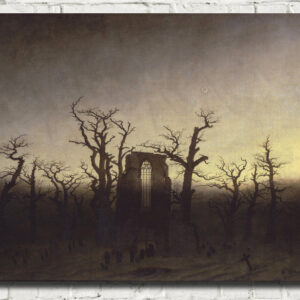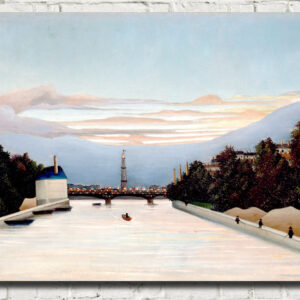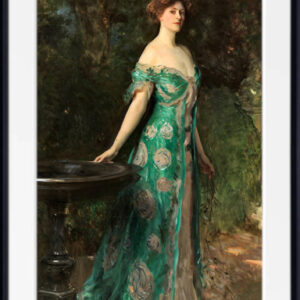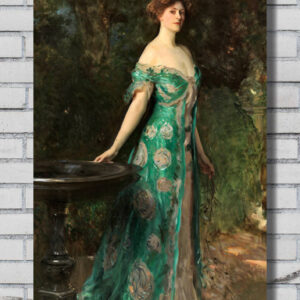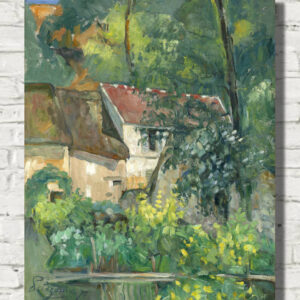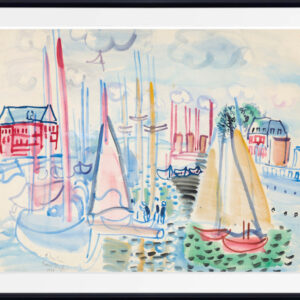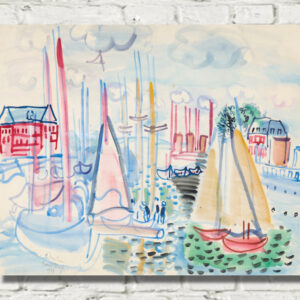Bridge over the Béal, Félix Vallotton
Pont sur le Béal is one of Vallotton’s signature landscapes which avoided conventional views and techniques, and presented unusual viewpoints and perspectives. The scene is sometimes seen from above, with the horizon very high in the picture, or without the sky being visible at all. The forms are simplified, and the figures are often small and almost unrecognizable. In his famous The Ball of 1899 (Musée d’Orsay), the scene is viewed from above, with three tiny figures: a girl chasing a ball and two mysterious figures in the distance having a conversation. The drama in the picture is the contrast between the sunlight and the shade.[30] In his 1899 painting of laundresses drying clothes on the beach of Étretat, the women are almost unrecognizable as such until the picture is examined closely. He wrote in his journal, “I dream of a painting entirely disengaged from any literal concern about nature. I want to construct landscapes entirely based on the emotions that they have created in me, a few evocative lines, one or two details, chosen, without a superstition of the exactitude of the hour or the lighting.”
Félix Édouard Vallotton (1865 – 1925) was a Swiss and French painter and printmaker associated with the group of artists known as Les Nabis. He was an important figure in the development of the modern woodcut. He painted portraits, landscapes, nudes, still lifes, and other subjects in an unemotional, realistic style.
Available as a fine art print and as a stretched canvas panel (heavy fine art canvas stretched over 1.5 inch deep edge solid wood frame).
All prints are made using archival art stocks and UV pigment inks to give up to 200 years life. Prints are sold unframed and unmounted.

